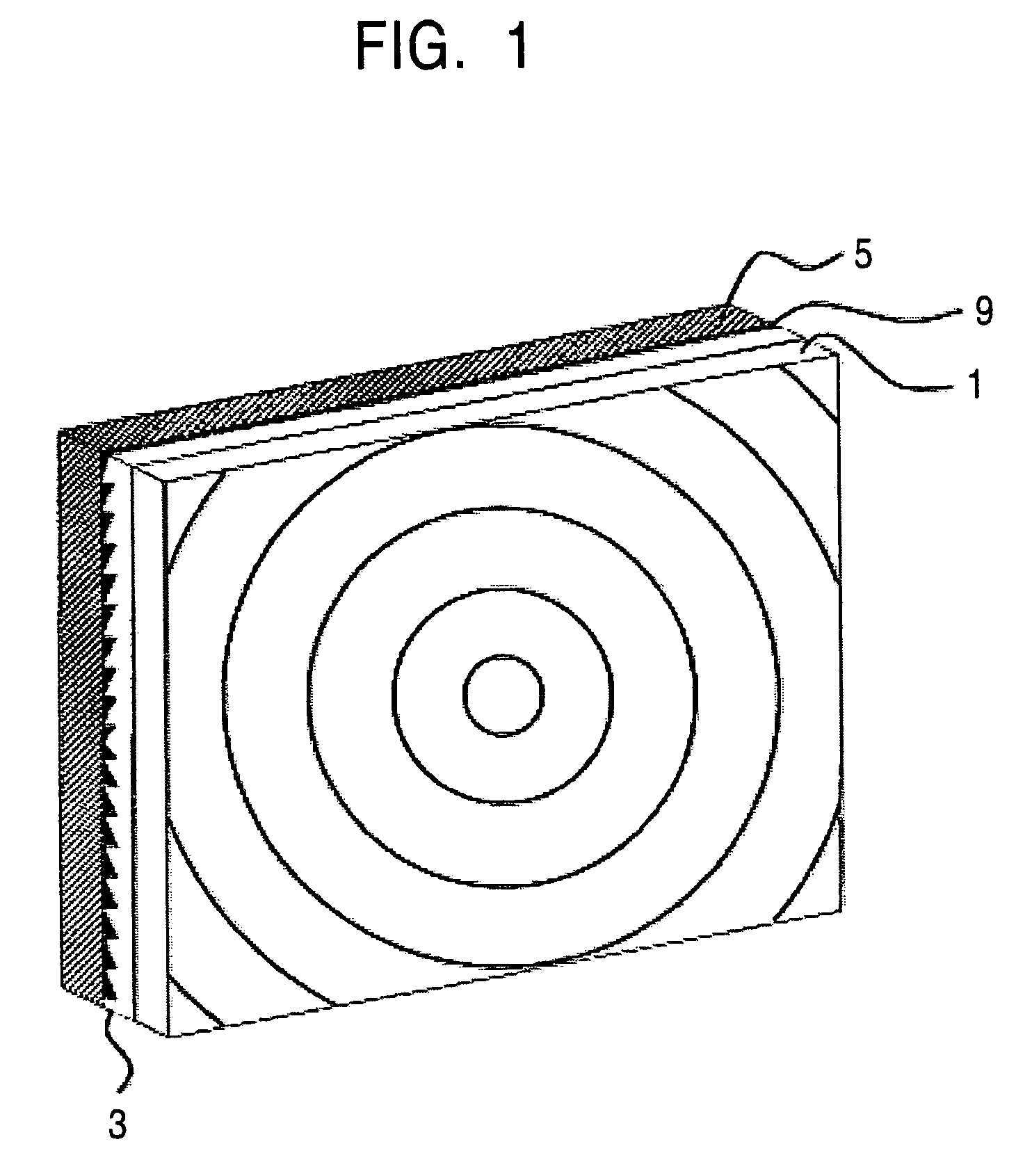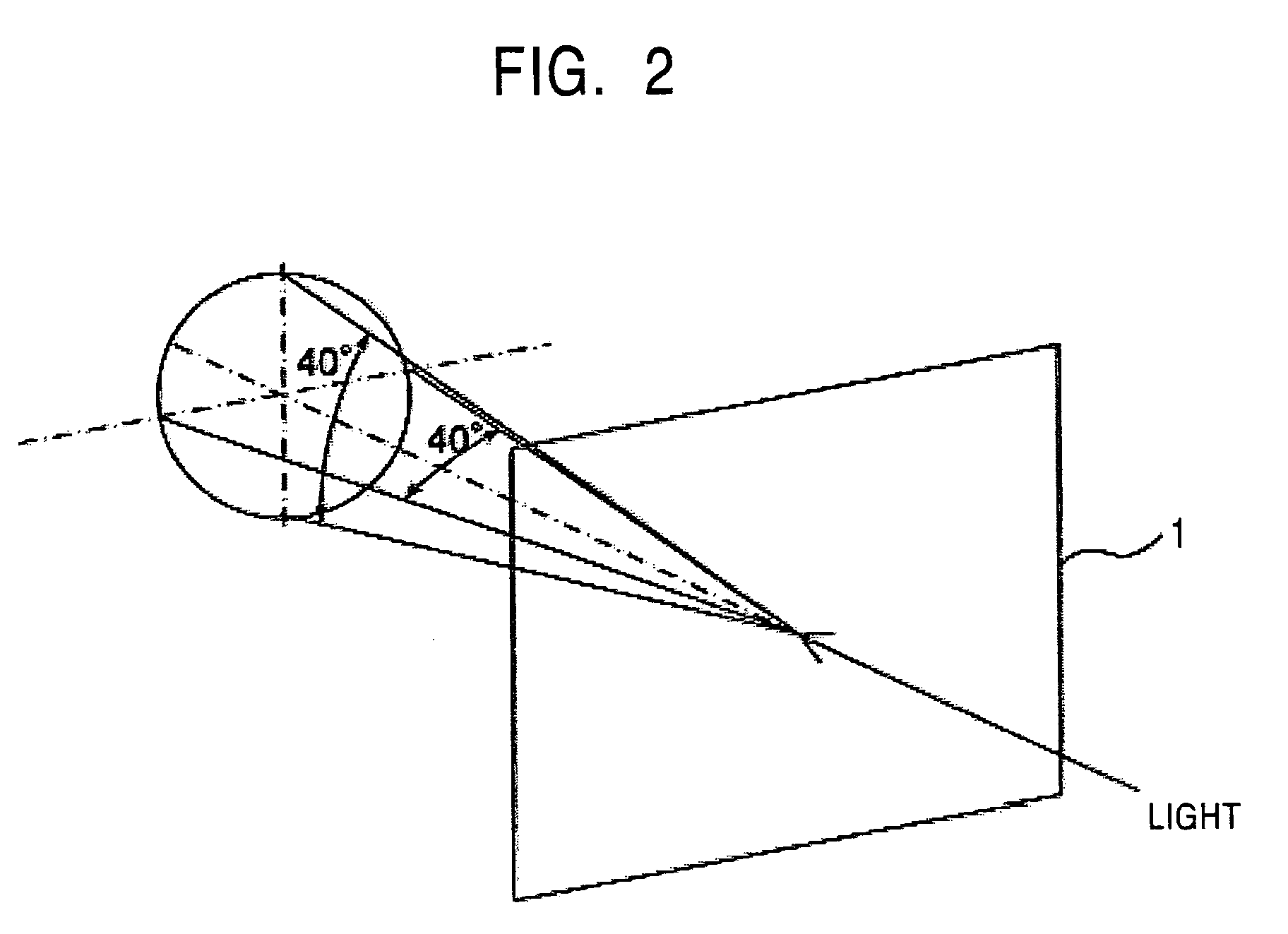Screen
a technology for screens and luminances, applied in the field of screens, can solve the problems of difficult to improve the overall luminance of screens, difficult to achieve vertical uniform luminance distribution, and inefficient use of projected light, and achieve the effect of easy provision of screens with highly uniform luminances
- Summary
- Abstract
- Description
- Claims
- Application Information
AI Technical Summary
Benefits of technology
Problems solved by technology
Method used
Image
Examples
first embodiment
[0045]FIG. 1 shows a screen according to the present invention. A diffusion film 1, a Fresnel lens 3, and a reflective layer 5 are laminated from front to back.
[0046]The diffusion film 1 is disposed at the front surface of the screen and scatters light reflected from the reflective layer 5 over a certain area. Examples of the diffusion film 1 include a diffusion film having a circular diffusion pattern with the same diffusion angle in the transverse direction and the longitudinal direction, as shown in FIG. 2, and a diffusion film having an elliptic diffusion pattern in which the longitudinal diffusion angle is smaller than the transverse diffusion angle, as shown in FIG. 3. For the diffusion film having a circular diffusion pattern, the FWHM in FIG. 4 is preferably 30°–60°, depending on the viewing angle required for the screen. FWHMs larger than 60° will increase ineffective diffusion outside the viewable area in the longitudinal direction and result in reduced screen gain. FIG. 2...
second embodiment
[0065]The screen has the same effect, as shown in FIGS. 12 and 13, only in the longitudinal direction owing to the refraction in the longitudinal direction by the linear Fresnel lens 23. Thus, the reflection of projected light is efficiently converged to the longitudinal viewable area without taking the transverse viewable area into consideration.
[0066]While only the linear Fresnel lens in the longitudinal direction is used in the second embodiment, a linear cross Fresnel lens, in which a linear Fresnel lens in the longitudinal direction and that in the transverse direction are attached to each other, may be used. In the linear cross Fresnel lens, since the magnification can be changed independently in the longitudinal direction and in the transverse direction, the reflected light can be efficiently converged to the longitudinal viewable area and the transverse viewable area. Thus, a high-performance, wide and large screen with uniform luminance can also be provided.
PUM
 Login to View More
Login to View More Abstract
Description
Claims
Application Information
 Login to View More
Login to View More - R&D
- Intellectual Property
- Life Sciences
- Materials
- Tech Scout
- Unparalleled Data Quality
- Higher Quality Content
- 60% Fewer Hallucinations
Browse by: Latest US Patents, China's latest patents, Technical Efficacy Thesaurus, Application Domain, Technology Topic, Popular Technical Reports.
© 2025 PatSnap. All rights reserved.Legal|Privacy policy|Modern Slavery Act Transparency Statement|Sitemap|About US| Contact US: help@patsnap.com



